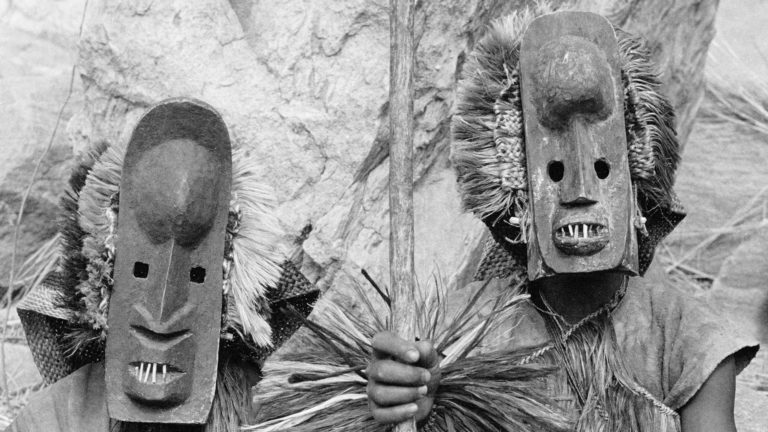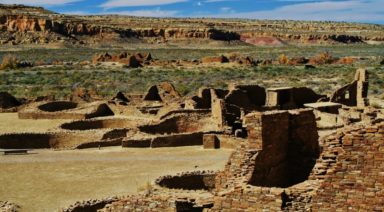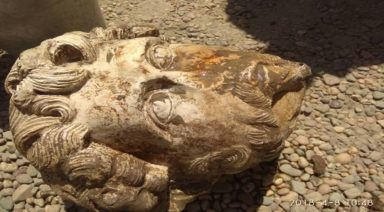Where Did the Dogon Tribe’s Knowledge of Sirius Come From?

The mythology and folklore of indigenous peoples are often dismissed as mere legends or parables passed down to honor elders and teach younger generations lessons about morality. However, some ancient stories appear to challenge modern science, such as the Dogon legend, which includes remarkably precise knowledge of astronomical bodies discovered only centuries later.
The Dogon people, an ancient West African tribe, claim their ancestors were descendants of beings from the Sirius star system, located eight and a half light-years away.
Their detailed understanding of Sirius B, a star invisible to the naked eye, has intrigued scholars and sparked debates about the possibility of ancient aliens influencing early human knowledge, giving rise to what is known as the Sirius mystery.
Hidden Knowledge of Sirius B
The Dogon inhabit an area of Mali in West Africa called the Bandiagara Escarpment, a stretch of sandstone cliffs nearly 100 miles long, reaching up to 1,500 feet high. Taking advantage of the area for its natural protection, the tribe built their homes on the side of the cliffs during the 3rd century B.C. and have remained there since. But it wasn’t until the 1930s that French anthropologists discovered their strangely advanced astronomical knowledge despite maintaining a very primitive lifestyle.
Although the Dogon live in an area more than 2,000 miles from Egypt, they have a history that appears to have some intriguing connections with its famed, ancient lineage that hinted at some connection to the stars.
Anthropologist Marcel Griaule’s study of the Dogon tribe revealed their profound knowledge of the Sirius star system, a key element of their cosmology. While Sirius A, the brightest star in the night sky, is visible without any aid, its companion, Sirius B, a dense white dwarf, was not officially discovered by Western astronomers until the 1970s with the aid of advanced telescopes. Remarkably, the Dogon people had long known not only about Sirius B but also its complex 50-year orbital period around Sirius A.
Even more intriguing is their mention of a third star, Sirius C, which some modern astronomers have speculated about but remains unconfirmed. The Dogon’s awareness of Sirius A, B, and C, including details about their movement and characteristics, has sparked widespread interest and debate about the origins of their advanced astronomical understanding.
Knowledge Preceding Modern Science
Planetary scientist Carl Sagan weighed in on the Dogon tribe and their supposed celestial cognizance by disavowing the idea that it could have come from otherworldly beings. The Dogon were aware of Jupiter’s moons and Saturn, along with its rings, but Sagan said that their lack of awareness of any other planets in our solar system was evidence that they were only reiterating a few pieces of knowledge given to them by their interaction with French anthropologists.
However, Sagan’s cursory analysis of the Dogon did not touch upon the fact that their knowledge of the Sirius star system was represented in 400-year-old artifacts, nor did he acknowledge their understanding of subatomic particles and their theory of the universe’s creation that was similar to the Big Bang.
The Dogon were also very aware of our location within the Milky Way Galaxy and knew of the state of Sirius B, being an incredibly dense and dying star. This curiosity also led them to make further discoveries regarding human anatomy long before Western discoveries were made.
Another unconfirmed part of the Dogon’s understanding of the Sirius system is the assertion that they knew about another star in the Sirius system, known as Sirius C. However, gravitational observations might prove their claim to be true.
An Otherworldly Explanation
So, were the Dogon visited by ancient astronauts? Or did the anthropologists who first studied them carry out an elaborate deception by giving them astronomical insight to regurgitate in front of a camera? Skeptics that agreed with Sagan, like astronomer Ian Ridpath, believed in the latter and that any information the tribe acquired about Sirius was through a European cultural exchange or influence.
There could be another explanation for the Dogon people’s advanced astronomy. Their familiarity with the star system could be related to their cosmic connection. Their ancestors are said to have come in contact with an extraterrestrial race of beings from Sirius who traveled to Earth, imparting their knowledge to the tribe more than 600 years ago. These amphibious beings, known as the Nommos, came from the same star system as the Egyptian god, Isis. In some accounts, the Dogon speak of the Nommos as being non-physical. Purportedly, they appeared only to a small sect of the Dogon tribe because extensive contact with humans would have been detrimental to their well-being.
If this is true, how have they passed their knowledge over the centuries? Every 60 years, when Sirius appears between two mountain peaks, marking a cycle in its orbit, the Dogon people hold a celebration called Sigui. Leading up to the celebration, the younger men of the tribe sequester themselves from the rest of the group for a few months. During this time, they speak in a secret language. Sigui itself can last for long periods of time; the most recent celebration lasted six years.
During these celebrations, the Dogon’s knowledge is passed on to future generations, but there is supposedly secret information regarding their past that has not left the tribe.
Strange Connections With Other Civilizations
Amphibious, godlike beings appeared in other ancient cultures outside of the Dogon. Ancient civilizations from Babylonia to Greece and even Slavic nations depicted aquatic beings in their mythology. One interesting connection that some have drawn with the Dogon is that of the Dogū in Japan. Alternative theories point to statues of the Dogū, whose name is similar to Dogon, that resemble an astronaut or being in a spacesuit.
The Dogū are thought to have arrived in flying ships, bringing written language and many aspects of civilization to the Japanese. Interestingly, in ancient Mesopotamian lore, there is a deity known as Dagon or Dagan, depicted as a merman or fish god—this depiction can also be seen in the Hebrew Bible.
But the Dogon’s connection with Egypt is the most intriguing and a good argument in their defense from the criticism of Sagan, Ridpath, and other pragmatists. The language that the Dogon speaks to describe the Sirius star system consists of ancient Egyptian words that have not been used for centuries. Other similarities between the two cultures can be seen in the way they organized their civilizations, such as the creation of an upper and lower kingdom and a 360-day calendar.
As the brightest star in the night sky, Sirius has captivated human imagination for centuries. Its connection to the Dogon tribe’s ancient knowledge continues to leave us in awe, sparking curiosity and inspiring us to explore the mysteries of their origins. This remarkable connection reminds us of the boundless wonders that our universe holds, waiting to be unveiled and understood.
Giant Human Skeletons Found Buried in Mounds Across North America

Around the turn of the 19th century, there were hundreds of reports from reputable sources of giant skeletons unearthed from ancient burial mounds across America. Human giants are not entirely a product of legend in our history.
André the Giant is a known example of a man with superhuman proportions and strength, reaching 7 feet 4 inches tall. But André’s size was the result of gigantism and acromegaly, disorders caused by an overactive pituitary gland, which releases too much growth hormone. And with the average human height at 5 feet 6 inches for men and 5 feet 2 inches for women, it’s rare to find someone of André’s height, let alone his stature.
With the extreme rarity of gigantism, affecting roughly three in a million, it’s surprising how often giants are spoken of in the Bible and North American folklore. David and Goliath, Jack and the Beanstalk, and Paul Bunyon are familiar examples of tales involving giants. But while these are thought to be myths or legends, is there any possibility that a race of giants once existed or were there humanoid ancestors significantly larger than us?




































